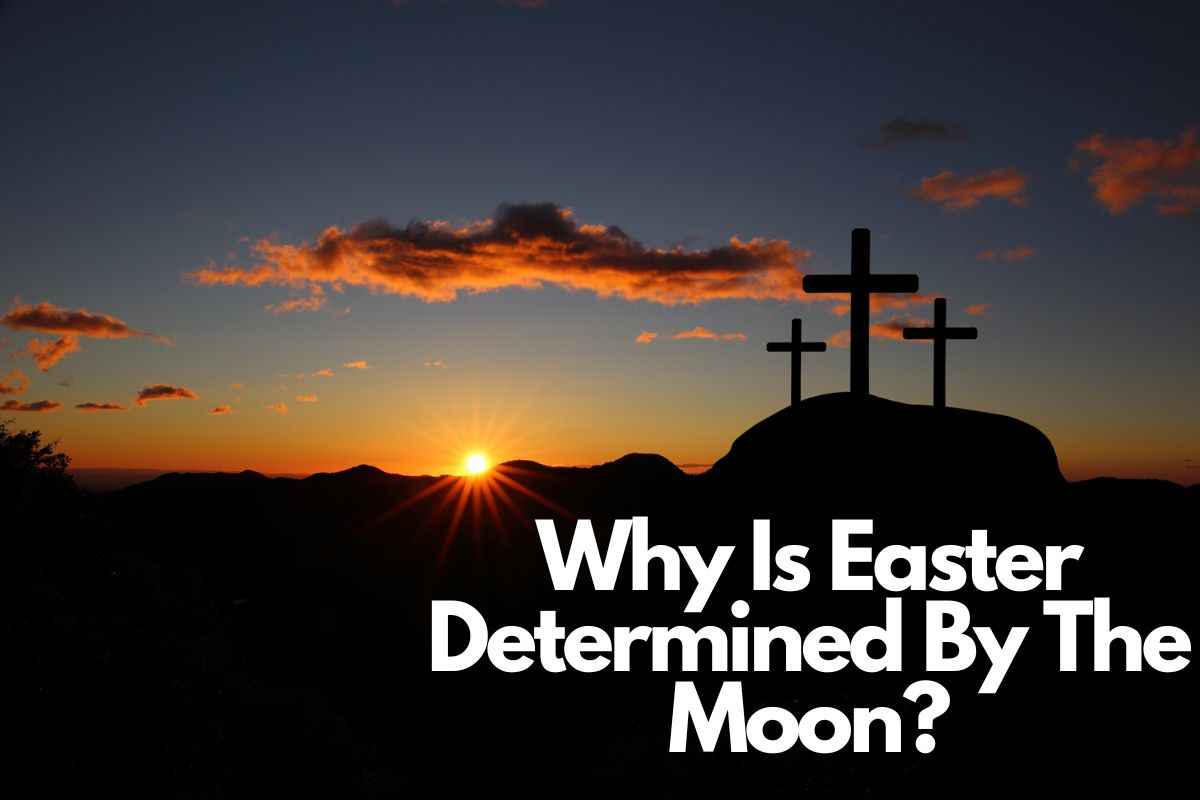The answer to this question lies in the complex history of the Christian church and its relationship with the Jewish calendar. In the early days of Christianity, there was no fixed date for Easter, and different churches celebrated it on different days. However, as the church grew and became more organized, a need arose for a standardized date for Easter that all Christians would observe.
One of the main challenges in determining the date of Easter was reconciling the lunar and solar calendars. Based on the lunar cycle, the Jewish calendar had a year of 12 lunar months, meaning it was about 11 days shorter than the solar year. This discrepancy meant that the Jewish holidays, tied to the lunar calendar, gradually drifted out of sync with the solar year.
To address this problem, the Jewish calendar included a system of intercalation, in which an extra month was added to the calendar periodically to keep it aligned with the solar year. However, the Christian church did not adopt this system and instead developed its method of calculating the date of Easter.
The early Christian church decided to celebrate Easter on the first Sunday following the first full moon after the spring equinox. This decision was based on several factors, including the symbolism of the full moon and the fact that it marked the start of the Jewish Passover. However, this method still presented some challenges, as the timing of the full moon could vary depending on the observer’s location and the year.
To address this variability, the church established a system of ecclesiastical lunar months based on the mean motion of the moon rather than its solid phases. This system allowed the church to accurately calculate the date of Easter and ensure that it fell on the correct day according to the Christian calendar.
Contents
Why is Easter determined by the moon?
Easter falls on a different date yearly. Easter dates are determined by a complex formula that considers lunar and solar calendars. Unlike other holidays that fall on a fixed date, such as Christmas on December 25th, Easter is one of the most important and celebrated holidays in Christianity, commemorating the resurrection of Jesus Christ from the dead. But have you ever wondered why the moon determines Easter?
Easter dates vary yearly but fall on a Sunday between March 22nd and April 25th. This may seem like a wide range, but there is a method to the madness. Easter is calculated as the first Sunday following the first full moon that occurs on or after the vernal equinox, which is the first day of spring in the northern hemisphere.
The reason for this formula dates back to the early days of Christianity. In the first few centuries after the death and resurrection of Jesus Christ, there was no standardized way to determine the date of Easter. Different regions and churches celebrated it on different dates, leading to confusion and conflict.
In 325 CE, the Council of Nicaea, a gathering of Christian bishops, was convened by the Roman Emperor Constantine to resolve this issue, among other theological disputes. At the council, it was decided that Easter should be celebrated on the same day by all Christians, but the question of determining the date remained.
At the time, the Julian calendar, which Julius Caesar created in 45 BCE, was the standard calendar used throughout the Roman Empire. The Julian calendar was a solar calendar, with each year consisting of 365 days divided into 12 months. However, it had a slight flaw in that it was about 11 minutes too long, which caused it to fall out of sync with the solar year over time.
Why does the moon determine Easter?
The moon determines Easter since it is a Christian celebration commemorating Jesus Christ’s resurrection, which is claimed to have occurred following the Jewish holiday of Passover.
The lunar cycle determines the date of Passover, precisely the 14th day of the Jewish month of Nisan, which begins at sundown on the day of the first sighting of the new moon following the vernal equinox.
Because Easter is linked to Passover, the lunar cycle also determines its date. The Council of Nicaea decreed in 325 CE that Easter would be celebrated on the first Sunday after the first full moon after the spring equinox, which occurs on or around March 21st.
Easter can fall between March 22nd and April 25th, which could fall between March 22nd and April 25th.
The origin of linking Easter to the lunar cycle can be traced back to the early Christian habit of celebrating the celebration on the same day as Passover, likewise based on the lunar cycle.
This custom was also practical in preventing Easter from clashing with the Jewish holiday of Passover, which would have produced confusion and controversy.
Why does the Paschal Moon determine the Date of Easter
Easter is a Christian holiday commemorating Jesus Christ’s resurrection from the dead. The date of Easter is not fixed but varies from year to year, with its observance falling between March 22nd and April 25th. The calculation of the date of Easter is based on the lunar calendar, specifically the full moon.
The lunar calendar is based on the moon’s phases and consists of 12 lunar months of 29.5 days each. However, a lunar year is about 11 days shorter than a solar year based on the earth’s orbit around the sun. A leap month is added to the lunar calendar approximately every three years to adjust for this discrepancy. This means the lunar calendar is not synchronized with the solar calendar and shifts relative to it over time.
Easter dates are calculated based on the spring equinox and the full moon. The spring equinox is when the sun crosses the celestial equator, and day and night are approximately equal in length. It falls around March 20th or 21st in the northern hemisphere. The full moon used in the calculation is the first full moon after the spring equinox. The date of Easter is set as the first Sunday following this full moon.
The use of the full moon to determine the date of Easter has its roots in the Jewish Passover. The Last Supper, the final meal Jesus shared with his disciples before his crucifixion, was a Passover meal. The date of Passover is determined by the Jewish lunar calendar and falls on the 14th day of Nisan. The full moon after the spring equinox was chosen to ensure Easter would not coincide with Passover.
The date of Easter is calculated based on the full moon after the spring equinox. This calculation method is based on the lunar calendar and ensures that Easter does not coincide with Passover, determined by the Jewish lunar calendar.
Why is Easter Based on the Full Moon
Easter is a Christian holiday commemorating Jesus Christ’s resurrection from the dead. It is observed on the first Sunday following the first full moon that occurs on or after the vernal equinox, typically March 21st. Easter can fall on any Sunday between March 22nd and April 25th.
Easter is based on the full moon because it is tied to the Jewish holiday of Passover, which also occurs during the same time of year. According to the Bible, Jesus was crucified during Passover, celebrated on the 15th day of the Hebrew month of Nisan. The date of Passover is determined by the Jewish lunar calendar, which is based on the moon’s cycles.
There was much debate in the early Christian church about when to celebrate Easter. Some believed it should be observed on the same day as Passover, while others believed it should be celebrated on a Sunday. Eventually, the Council of Nicaea in 325 AD established that Easter should be observed on the Sunday following the first full moon after the vernal equinox.
This formula for determining the date of Easter is known as the computus, and it is still used by the Catholic, Orthodox, and many Protestant churches today. However, because the lunar cycle is not precisely 29.5 days long, and the date of the vernal equinox can vary slightly from year to year, Easter can also vary from year to year.
In conclusion, Easter is based on the full moon because it is tied to the Jewish holiday of Passover, which is determined by the moon’s cycles. The decision to celebrate Easter on the Sunday following the first full moon after the early Christian church made the vernal equinox to establish a consistent date for a holiday.
Is Easter Based on the Moon
Yeah, Easter is based on the lunar calendar. The full moon explicitly defines it after the spring equinox.
In other words, Easter is observed on the first Sunday following the first full moon on or after March 21, the spring equinox. As a result, the date of Easter can fluctuate from year to year, falling between March 22 and April 25.
The “ecclesiastical” or “Christian” calendar is used to determine the day of Easter, and it derives from ancient Jewish and Roman calendars.
The early Christian church used the full moon and the equinox as reference points to ensure that Easter fell at roughly the same time each year to mark Jesus Christ’s resurrection.
According to mathematical calculations, Easter is observed on the first Sunday following the Full Moon date, on or after March 21.
If the Full Moon falls on a Sunday, Easter falls on the following Sunday.
Although Easter is liturgically tied to the beginning of spring in the Northern Hemisphere (March equinox) and the Full Moon, its timing is not based on the actual astronomical date of either event.
The Church’s date for the March equinox is March 21, regardless of time zone, although the actual date fluctuates between March 19 and March 22, depending on the time zone.
The date of the Paschal Full Moon, used to determine Easter, is based on mathematical estimations based on a 19-year cycle known as the Metonic cycle.
Both dates may or may not coincide with the astronomical events in different years.







